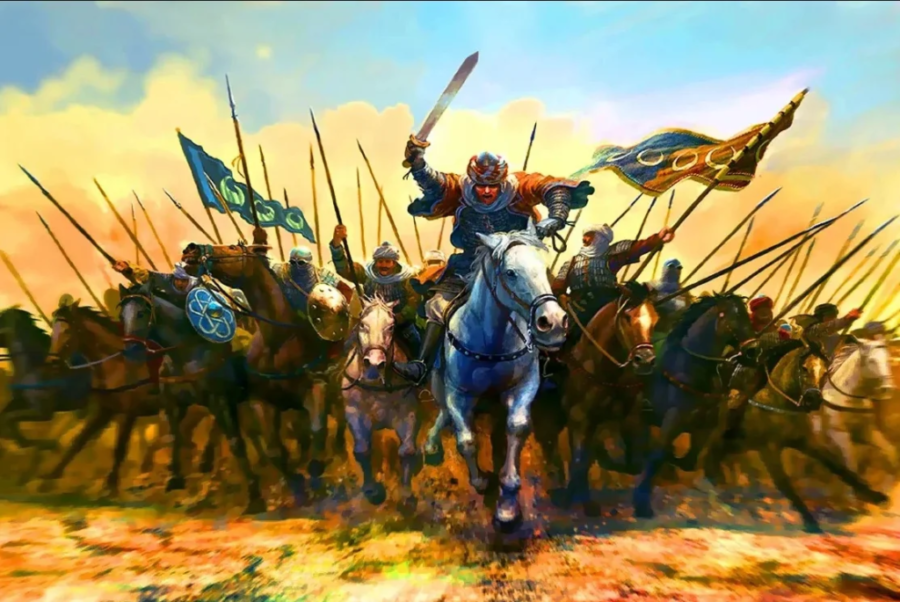
Sipahsalar – Commander-in-Chief in the Islamic World
The term sipahsalar was widespread in the Islamic world and even in the Christian countries of the Caucasus and denoted a high-ranking military leader.
This term was formed by the Persian words sipah “army” and salar ” commander “. Its other forms are ispahsalar, isfahsalar. The spread of the title began in the 10th century. in Deylem and other Persian societies, in the states of Buyids and Saffarids. During the war, the Samanids’ troops were commanded, as a rule, by the wali of Khorasan, which is why they were called “sipahsalar-i Khorasan”. The person appointed to this position was presented with a banner and a robe.
According to Ibn al-Jawzi, under the Abbasids, military formations consisting of high-ranking and influential military were called “Isfahsalariyya”.
The influence of the Buyids, and especially the Seljuks, led to the spread of the term ispahsalar, along with other Persian titles, to the west, the Eastern Mediterranean and even the Christian regions of the Caucasus. He entered the Armenian language as “spasalar” and denoted the supreme commander-in-chief, in the Georgian language as “amirspasalar” and had the same meaning.

Source: pinterest.com
The Ghaznavids called sipahsalars the heads of regions who combined the post of commander-in-chief and ruler. On their behalf, in mosques reading khutbah , that was a sign of their independence. Members of the ruling family were appointed to this position, such as the sons of Sabuk-Tegin (942-997) – Nasr, Mahmud and Yusuf. When Ahmad ibn Ali Nushtegin was appointed sipahsalar and governor (wali) of Kerman, he was given a belt, a high hat with two tassels, a banner and five elephants as a distinctive sign.
Among the Great Seljuks, the commander-in-chief was called “sipahsalar-i buzurg” or “amir-i sipahsalar (isfakhsalar)”. He was responsible for training the army, its combat readiness, maintaining morale and command. Under the Seljuks, the sipahsalar simultaneously acted as governor (wali). The title “amir-i sipahsalar” can also be found in the official letters of the Khorezmshahs. And the commanders of the border regions they called another version of this title, which is not found anywhere else – “kyr isfakhsalar”.

Source: zen.yandex.ru
The title of Sipahsalar was one of the highest among the Fatimids, being the third in importance after the vizier and Sahib al-Bab. Among the numerous titles of the founder of the Zangid dynasty, Imad ad-Din Zangi (1085-1146), was “al-amir al-isfahsalar al-kabir” (“the great emir isfahsalar”). Among the Mamluks, Isfakhslar was the honorary title of the head of the tablhane (military orchestra).
Also, the term was used in Ilkhanids, in the Muslim states of India and in Iran, where he re-emerged under the Shah Abbas I. Before that commander in chief in Persia was called Amir al-Umar (emir of the emirs) and kurdzhubashi, when it was introduced by the title “sipahsalar -i Iran ”,“ sipahsalar-i kull-i lashkar-i Iran ”. It existed until the second half of the 19th century.
In the Ottoman Empire, the title of sipahsalar was rarely used. Under Murad II, Anatolian beys were called “Sipahsalars of Anatolia”. In the Ottoman Empire, the head of the armed forces bore the title of Serdar or Serasker, but in some sources of the 18th century. called “Serdar-i Sipaskhalar”.
Islamosphere
(based on materials from İslâm Ansiklopedisi and Wikipedia)
SOURCE: https://islamosfera.ru/sipaxsalar-glavnokomanduyushhij-v-islamskom-mire/

